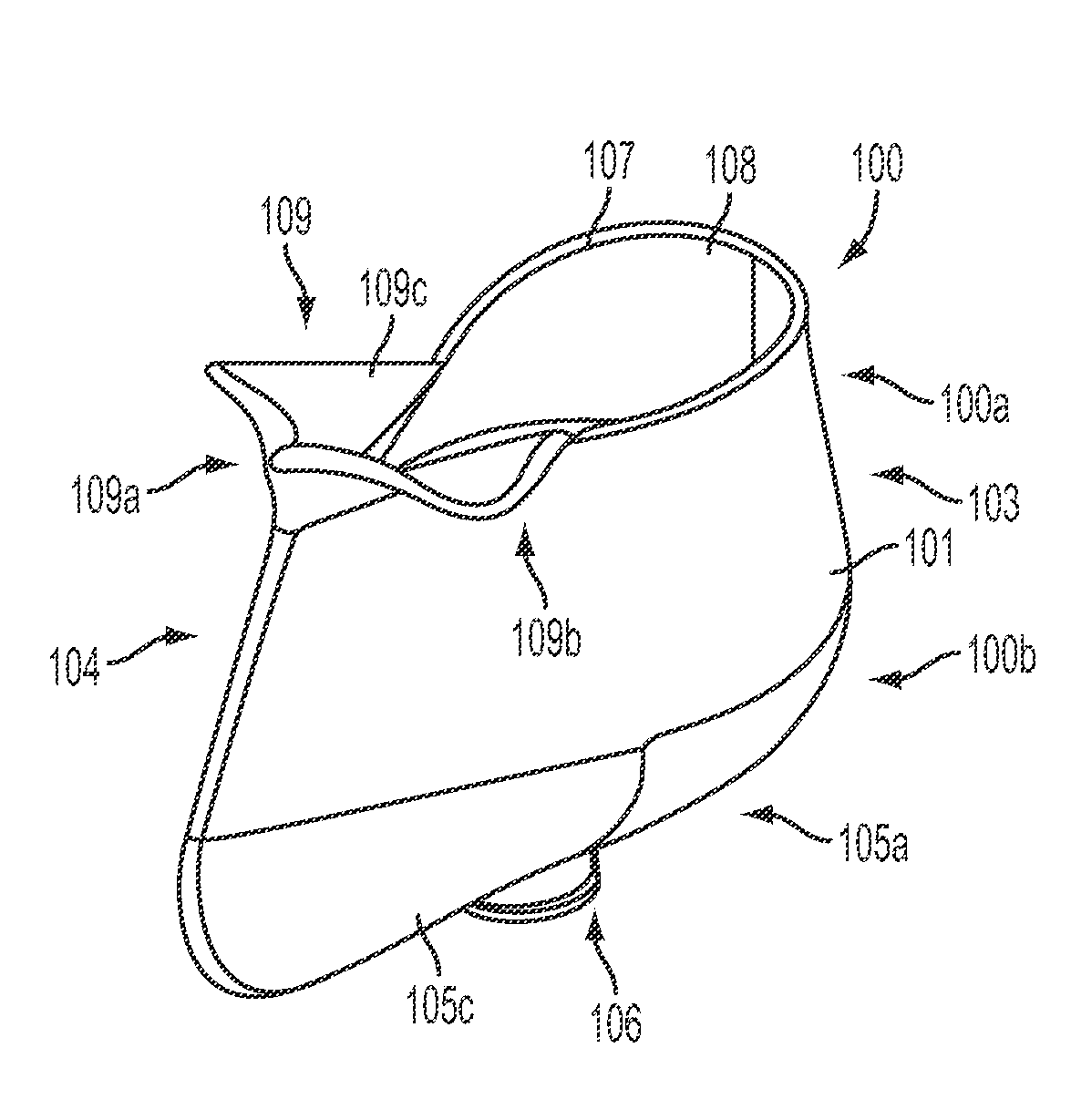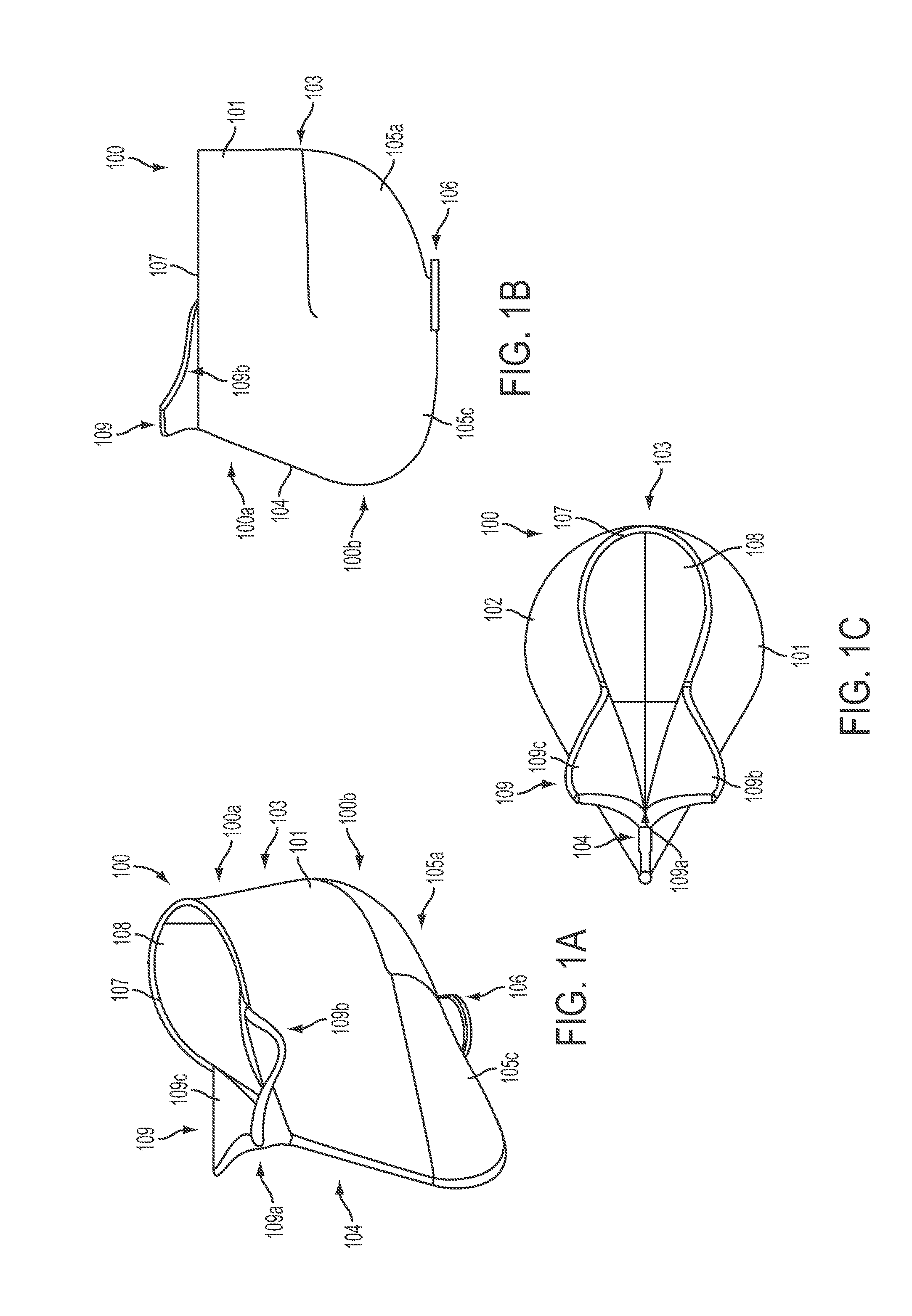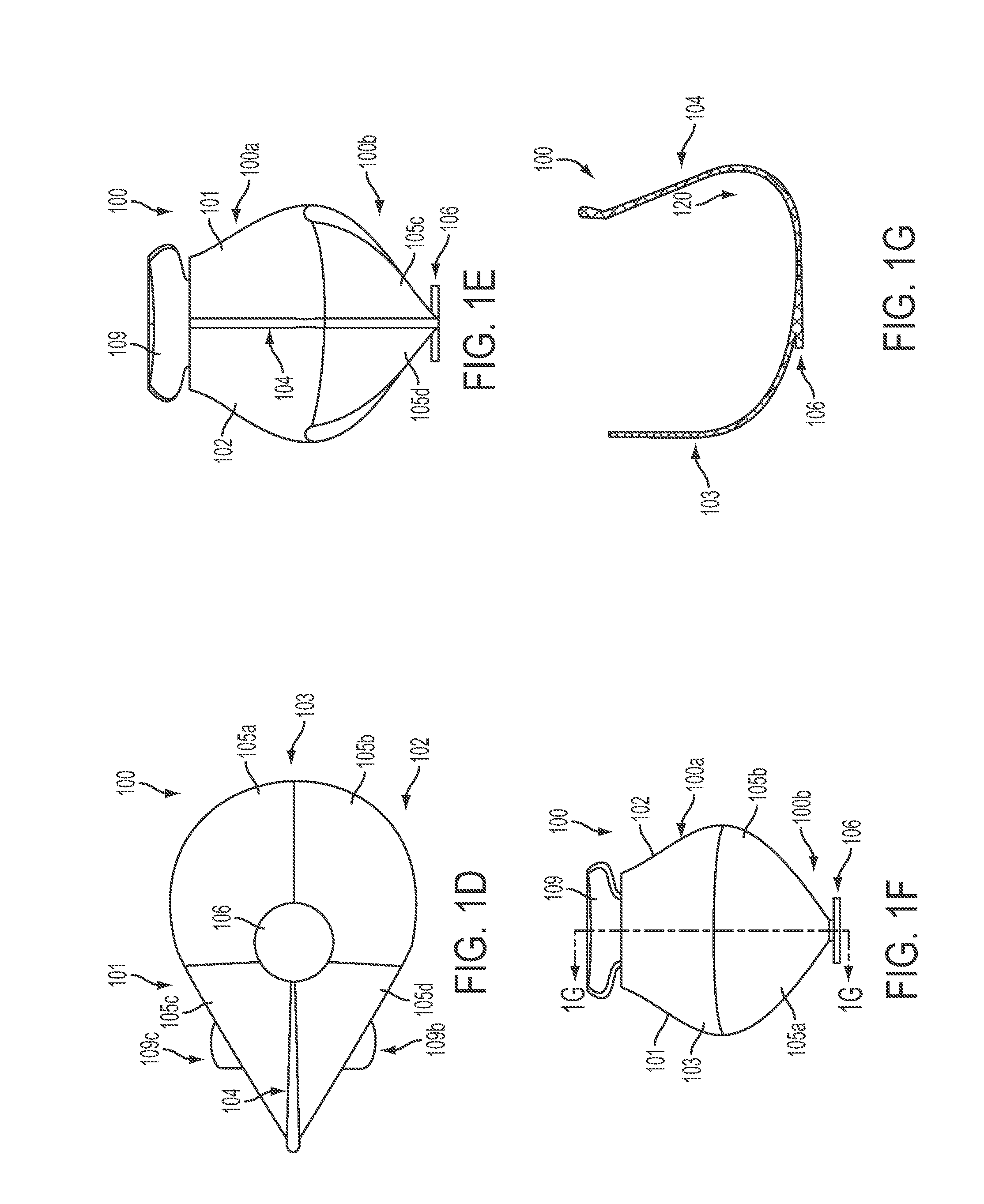Capillary beverage cup
a beverage cup and rim technology, applied in the field of capillary beverage cups, can solve the problems of beverage dissociation from the cup, loss of sipping or drinking experience, loss of flavor, etc., and achieve the effects of improving mental health and well-being, cleaning delivery, and reducing flavor
- Summary
- Abstract
- Description
- Claims
- Application Information
AI Technical Summary
Benefits of technology
Problems solved by technology
Method used
Image
Examples
Embodiment Construction
[0014]This detailed description relates to cups for drinking beverages in low-gravity environments, for example lower than standard gravity on earth. In one example, this description relates to cups that leverage capillary action to passively pump fluid from the interior of the cup to a lip interface, where the beverage may be imbibed by a user. Such cups may be expected to function effectively provided the impacts of surface tension and cup geometry are significantly greater than the impact of gravity, allowing for use in standard gravity (e.g. on Earth), sub-standard gravity (e.g. on the Moon, on Mars, on asteroids and / or other fractional bodies), or low to near zero gravity (e.g. free flying in outer space).
[0015]FIGS. 1A-1G show perspective views of an example capillary beverage cup 100. FIG. 1A shows a view of capillary beverage cup 100 from angled perspective. FIG. 1B depicts capillary beverage cup 100 as viewed in profile from the right side. FIG. 1C depicts capillary beverag...
PUM
 Login to View More
Login to View More Abstract
Description
Claims
Application Information
 Login to View More
Login to View More - R&D
- Intellectual Property
- Life Sciences
- Materials
- Tech Scout
- Unparalleled Data Quality
- Higher Quality Content
- 60% Fewer Hallucinations
Browse by: Latest US Patents, China's latest patents, Technical Efficacy Thesaurus, Application Domain, Technology Topic, Popular Technical Reports.
© 2025 PatSnap. All rights reserved.Legal|Privacy policy|Modern Slavery Act Transparency Statement|Sitemap|About US| Contact US: help@patsnap.com



